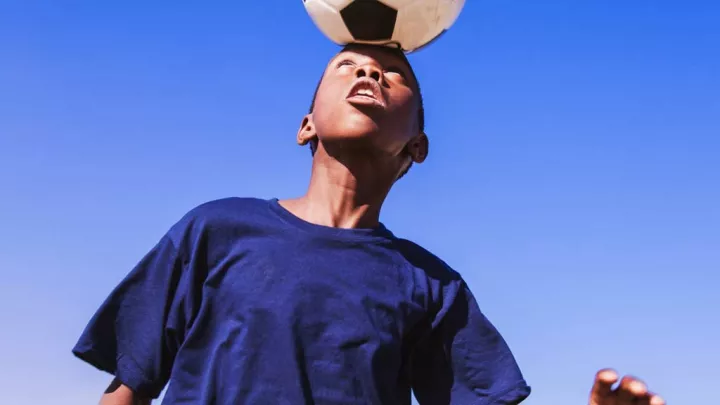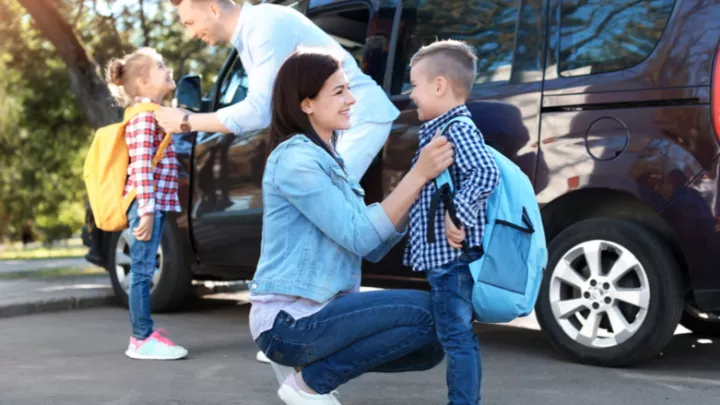When “Walk It Off” Just Won’t Do
Concussions in professional sports players have been prominently featured in the news recently. As a parent of two active boys involved in sports, I always worry about concussion injuries.
How a concussion happens
Concussions can occur while playing organized sports or during normal play. Knowing the signs and symptoms of a concussion, when to seek medical care, and how to care for your child if he or she has suffered a concussion can impact their recovery.
What is a concussion?
A concussion is a type of mild traumatic brain injury (mTBI) caused by a bump, blow or jolt to the head or by a hit to the body that causes the head and brain to move rapidly back and forth. This sudden movement can cause the brain to bounce around or twist in the skull, stretching and damaging the brain cells and creating chemical changes in the brain. Those chemical imbalances, in the setting of decreased blood flow to the brain, set off an energy crisis in the brain that then manifests as a variety of symptoms.
Stages of a concussion
Symptoms of a concussion that can occur immediately after an injury include:
- Temporary loss of consciousness
- Headache
- “Seeing stars”
- Dizziness
- Nausea
- Ringing in the ears
- Confusion
- Slurred speech
- Delayed response to questions
- Appearing dazed
Symptoms that may appear later include:
- Headaches
- Difficulty sleeping or excessive sleepiness
- Irritability
- Sensitivity to light and noise
- Changes in taste
A challenge for parents is that symptoms of a concussion can be subtle and may not be apparent immediately after an injury. More subtle changes from concussion include:
- Disruptions in learning
- Difficulty concentrating
- Memory loss and processing problems
Additional symptoms are:
- Sudden change in behavior
- Repeated bouts of vomiting (two or more)
- Seizures
- Pupils that are two different sizes
- Any blood or clear fluid coming from the ears or nose
Emerging medical research indicates there can be lifelong learning problems after suffering repeated concussions.
What should parents do?
The American Academy of Pediatrics recommends that you contact your child’s primary care provider if your child receives any more than a light bump to the head. If your child does not develop any of the above signs of a concussion, likely the injury was mild and did not cause a concussion. However, any concern about a possible concussion should err on the side of caution. Your child should be evaluated by a provider who is trained in the management of concussions and should not return to sports until cleared to do so. If you notice any of the symptoms listed in the setting of a head injury, your child should be evaluated in an emergency room.
When is it okay to go back to school?
It is important to follow appropriate steps after a concussion to allow the brain to heal adequately, so that the child can safely return to return school and eventually sports. Rest is the most important “medicine” for a concussion. It is normal for children to feel more tired than usual, so let them go to bed early, sleep in and take naps. Make sure that the family, health care professionals, school professionals and coaches are all on the same page ans support the need for healing time. The following steps may be useful in helping your child transition back into the classroom and should be discussed with the team.
Step 1: Complete cognitive rest
- Possibly no school, no homework, no texting, no video games
- Appropriate activities may include listening to audio books, drawing, cooking and watching minimal television
Step 2: Light cognitive activity once symptoms have improved
- Activities that do not cause symptoms to worsen; children may only tolerate five to 15 minutes of the activity
- Stop the activity when moderate symptoms develop
Step 3: Increase school-specific activity gradually
- Try doing schoolwork at home and increase as tolerated
Step 4:The child is ready to return to school
- When the child is able to do one to two hours of homework at home for one to two days, he or she may return to school for a half day and then gradually increase attendance as tolerated.
- If a child develops symptoms at school, he or she should take a break in a quiet, supervised area until symptoms resolve, and then return to class.
- If symptoms do not resolve, the child should go home.
Returning to school and class does not mean returning to full sports. Consideration for returning to sports should be made after the child can tolerate the academic and social activities of a full school day. A child should be cleared for physical activity by a concussion specialist before returning to sports or recreational activity. Once symptoms are resolved, and the child feels up to returning to activity, the team will consider a gradual step-by-step return to physical activity and eventually sports.
While most children recover from a single concussion, each recovery occurs at the person’s own rate.
The Sports Concussion Clinic in the Jackie and Gene Autry Orthopedic Center at Children's Hospital Los Angeles offers a comprehensive team of experts to care for your child and answer any questions parents may have.


